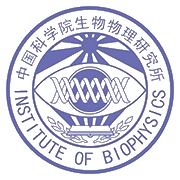Sessions 2:Chemical Sciences
Xinhe Bao

Character introduction
Xinhe Bao received his PhD in Physical Chemistry from Fudan University in 1987 and then worked as a Fellow of Alexander von Humboldt in Fritz-Haber institute of Max-Planck Society in Berlin/Germany. He became a full Professor of the Dalian Institute of Chemical Physics (DICP, CAS) in China in 1995 and the group leader of Nano & Interface Catalysis at the State Key Laboratory of Catalysis later. He held the position of the institute director from 2000 to 2007 and was appointed the Executive Vice President Fudan University in 2015 and the President of University of Science and Technology of China in 2017. Xinhe Bao is the member of Chinese Academy of Sciences, the member of the Academy of Sciences for the Developing World (TWAS) and the Honorary Fellow of the Royal Society of Chemistry (Hon. FRSC). Professor Xinhe Bao is dedicated to the exploration of new catalytic materials and efficient processes for energy conversion. The team he leads is unique in that they combine theoretical calculations, model catalysis and technical catalysis, which has led to a number of breakthroughs with both scientific and industrial impact.
Topic: On the Nature of Nano-Confinement in Catalysis
Abstract With the further development of nanoscience and nanotechnology, people now have gotten a deeper understanding of nanofeatures, and their recognition and attitude of nanoeffects in various systems becomes more and more reasonable. Catalysis has always been a very important aspect of nano science research and nanoeffect applications. It’s very pleased to see that nano-catalytic research is shifting from the early “pan-structuralism”, that is, over-considering the influence of apparent nanostructures on catalytic performance, further emphasizing the understanding the nature of nanocatalytic effects, and more emphasis on the dynamic change of nanostructure during catalytic reaction. In this report, I will combine our team's long-term studies in the field of nano-confinement catalysis and further explain the understanding of nanocatalysis taking the activation of small carbon-containing molecules, namely CH4 and CO activation as examples, and further explore the concept of nano-confinement in catalysis.
KEY WORDS: Nano-Catalysis, Confinement, Energy Conversion
REFERENCES
1. F Jiao, X Pan, K Gong and X Bao et al., Angew Chem Int Ed, 2018, 57: 4692−4696
2. P Schwach, X Pan, and X Bao, Chem. Rev., 2017 117, 8497−8520
3. Jiao, F.; Li, J.; Pan, X.; Bao, X. et al., Science, 2016, 351 1065-1068.
4. Q Fu, F Yang, X Bao, Acc. Chem. Res., 2013 DOI: 10.1021/ar300249b
5. Q Fu, W Li and X Bao,et al., Science, 2010 328,1141-1144 2.
KEY WORDS: Nano-Catalysis, Confinement, Energy Conversion
REFERENCES
1. F Jiao, X Pan, K Gong and X Bao et al., Angew Chem Int Ed, 2018, 57: 4692−4696
2. P Schwach, X Pan, and X Bao, Chem. Rev., 2017 117, 8497−8520
3. Jiao, F.; Li, J.; Pan, X.; Bao, X. et al., Science, 2016, 351 1065-1068.
4. Q Fu, F Yang, X Bao, Acc. Chem. Res., 2013 DOI: 10.1021/ar300249b
5. Q Fu, W Li and X Bao,et al., Science, 2010 328,1141-1144 2.
Previous Philip David Coates
Next Flemming Besenbacher








